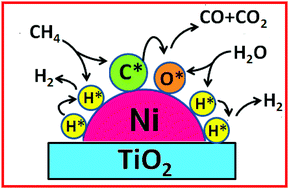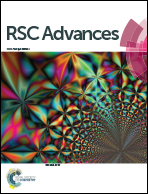Catalytic performance of highly dispersed Ni/TiO2 for dry and steam reforming of methane
Abstract
The present study reports a sonochemical-assisted synthesis of a highly active and coke resistant Ni/TiO2 catalyst for dry and steam reforming of methane. The catalyst was characterized using XRD, TEM, XPS, BET analyzer and TGA/DTA techniques. The TEM analysis showed that Ni nanoparticles were uniformly dispersed on TiO2 surface with a narrow size distribution. The catalyst prepared via this approach exhibited excellent activity and stability for both the reactions compared to the reference catalyst prepared from the conventional wet impregnation method. For dry reforming, 86% CH4 conversion and 84% CO2 conversion was obtained at 700 °C. Nearly 92% CH4 conversion and 77% CO selectivity was observed under a H2O/CH4 ratio of 1.2 at 700 °C for the steam reforming reaction. In particular, the present catalyst is extremely active and resistant to coke formation for steam reforming at low steam/carbon ratios. There is no significant modification of Ni particles size and no coke deposition, even after a long term reaction, demonstrating its potential applicability as an industrial reformate for hydrogen production. The detailed kinetic studies have been presented for steam reforming and the mechanism involving Langmuir–Hinshelwood kinetics with adsorptive dissociation of CH4 as a rate determining step has been used to correlate the experimental data.


 Please wait while we load your content...
Please wait while we load your content...